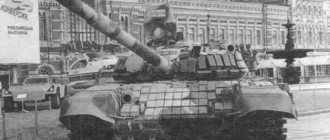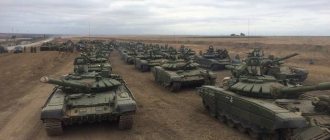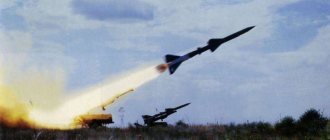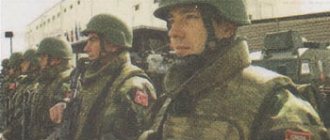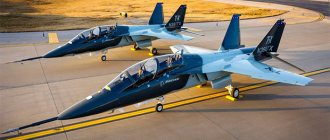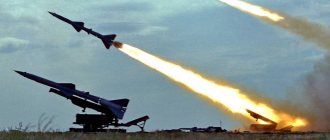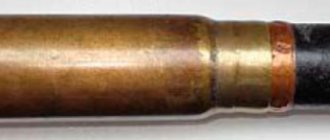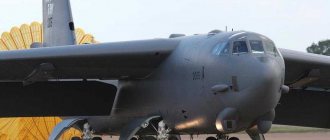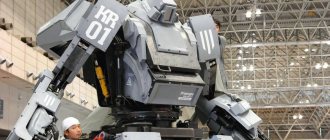Russian S-400 anti-aircraft systems were tested on American aircraft in Turkey
Not far from Ankara, the Turkish military began new tests of the S-400 anti-aircraft missile systems (SAM). They sent them from Murted airbase against American F-16 and F-4 fighters, Fighter Jets World reports.
The portal notes that testing of Russian weapons began on July 4 and will last several months until November 26. According to the publication, the Turkish authorities ignored the US warning about the possible imposition of sanctions in the event of testing the air defense system.
Tests of the S-400 took place in Turkey last fall. The missile systems were then also tested on American planes, which flew over Ankara at various altitudes, while Russian systems controlled the skies.
In the FAN
military expert Alexey Leonkov said that the S-400 has proven that US stealth fighters can detect it.
The agency is talking about American fifth-generation fighters 200 km from the military base. The Turkish military decided to use this opportunity to test Russian systems on real targets. Leonkov suggested that Turkish air defense crews tested the radar system of the Russian air defense system.
“When irradiation occurs, the missiles are not launched, but the entire program is worked out: detection, target tracking and launch. Moreover, everything is done electronically, and the automation calculates the missile hit. That is, it’s like for training purposes, but without missile launches,” the specialist explained.
He emphasized that the Russian side “always said” that air defense systems detect US fighters. “The S-300, S-400, and Buki can see them, since their systems use phased array antennas operating in the range that detects stealth. There is a target mark, and the radar system notices it, there is a resolution that it sees,” the expert said.
Leonkov added that the only advantage of stealth in this case is its detection at a closer distance. “But even if these comrades were flying not 200 km, but 300, they would still be seen. The reaction time of the systems allows us to assume that while these aircraft are doing something, the S-400 missiles will catch up with them. By the way, the Chinese also successfully tested the S-400 missile at maximum range and launched a maneuvering target,” the agency’s interlocutor added.
Russia's deliveries of S-400 air defense systems to Turkey began last summer. The purchase by the Turkish authorities of these complexes provoked a conflict with the American side. The United States said that if Turkey does not abandon Russian systems in favor of American Patriots, sanctions will be imposed and sales of F-35 fighter jets to the Turkish military will be canceled. Ankara refused to comply with Washington's demands.
Russia has fulfilled the first contract to supply Turkey with four S-400 divisions worth $2.5 billion, RIA Novosti reports. The parties also reached agreement on the second batch.
At the end of June, US Republican Senator John Thune proposed buying Russian S-400s from Turkey using the 2022 national defense budget. At the same time, the document does not contain information about whether Ankara has a desire to resell the complexes without Moscow’s permission.
Russian senator Vladimir Dzhabarov, in a conversation with the radio station “Moscow Speaks,” suggested that the Americans want to buy the complexes in order to disassemble them “down to the cogs” and try to make similar weapons. He believes that “Turkey is unlikely to agree to this,” since this could lead to it losing its status as a reliable partner.
“I cannot understand how relations between the United States and Turkey will improve if the United States takes some kind of C-400 complex for itself,” Dzhabarov added. The politician expressed the opinion that the United States wants to “satisfy its curiosity” and “simply steal” Russian military secrets.
Erdogan’s “Triumph”: S-400 shoots down British drones and takes aim at American F-16s
Turkey nevertheless tested the Russian S-400 Triumph, purchased in spite of US threats, in real conditions. Previously, no military exercise using these anti-aircraft missile systems has attracted such close attention. And, as Ankara reported, during the testing of Zafer (triumph in Turkish), three targets were successfully hit, which were Meggitt Banshee target drones made in the UK, reaching speeds of up to 200 km/h with a flight altitude of up to 7000 meters. The Turkish maneuvers have become resonant - they are talked about in many countries, and with different interpretations.
With Russia itself, everything is clear - there are 33 regiments in service, which include 69 divisions with a total of 552 S-400 air defense missile launchers (the name "Triumph" in export version, according to NATO codification - SA-21 Growler, literally "Growler" ). Air defense troops regularly practice firing exercises from these systems, for example, S-400 crews stationed in the Volga region conducted combat launch exercises at the Ashuluk training ground in the Astrakhan region in August. They did not attract increased attention - this is a common thing, each of the air defense divisions conducts up to 30 major combat training events.
The exception was the Slavic Shield 2019 exercise in Serbia, where Russian S-400s carried out launches for the first time outside the country at the Pasulyanske Levade training ground and at the Batajnica airbase. Those maneuvers in NATO caused some concern. Triumphs are also periodically praised in China, which in December 2022 received the second regimental set of Russian air defense systems and another 120 of the latest guided missiles of two types. The Celestial Empire called the S-400 a “symbol of national tranquility,” despite the fact that over the last decade they have been actively promoting their own Hongqi-9 air defense system to the market. After the first training firing of the Triumph, experts from the Xinhua agency wrote: “The advertising brochures of Almaz-Antey (JSC Concern VKO Almaz-Antey - developer and manufacturer of Russian anti-aircraft systems - “SP”) do not lie! China should be happy."
Al Jazeera discusses S-400 tests in Turkey and the risk of use against Russian aviation
In the near future, Türkiye expects to conduct additional tests of the Russian S-400 air defense system.
It is not yet clear whether these plans of Ankara are connected with the new armed conflict in Karabakh. As you know, the decision to purchase the S-400 air defense system from Russia caused a storm of indignation among Turkey’s main NATO partner, the United States. However, Recep Erdogan did not follow Washington’s lead and the S-400s were nevertheless delivered to Turkey. For this, the United States excluded Turkey from the F-35 fighter jet program.
After the delivery of the S-400, the Turkish military began testing them. First, Turkish F-16 and F-4 aircraft simulated an attack on Ankara and were detected by S-400 radars. Then a Greek F-16 aircraft, returning from a NATO exercise, came into the radar field.
At the beginning of October of this year, the Turkish command transferred the S-400 to the Black Sea, to the Sinop area. This is where they are going to be tested again. Meanwhile, a number of foreign media are already expressing concern about the possible preparation of the S-400 to participate in a new armed conflict in the Transcaucasus if it crosses the borders of Karabakh and Turkey joins it. In this case, the S-400 could be used against Russian aircraft.
As Al-Jazeera writes, unlike the Patriot, the S-400 air defense system can hit several aircraft at once at a range of up to 400 kilometers. This means that with the help of the S-400, Turkish air defense “covers” most of Syria. Moreover, the S-400 battery located on the Syrian-Turkish border is capable of hitting aircraft in the Damascus area and even Beirut. Naturally, Russian planes heading to the Khmeimim base in the Syrian province of Latakia also come under attack from the battery.
Not only Russia, Syria and Armenia, but also Greece should be concerned about Turkey’s possession of the S-400. Although Greece is formally an ally of Turkey in the North Atlantic Alliance, in reality both countries have long viewed each other as potential adversaries. Greece operates Russian S-300 air defense systems, and is very concerned about the emergence of a more advanced air defense system in Turkey.
With the help of the S-400, Türkiye can control the entire Aegean Sea and the Eastern Mediterranean. It is worth recalling the story of the late 1990s, when Cyprus acquired the S-300 from Russia. Then it was Ankara that protested against the deployment of air defense systems in Cyprus, arguing that with their help Cyprus would be able to control Southern Turkey. As a result, the S-300s were transferred to Greece and stationed in Crete.
The video captured a convoy of S-400 air defense systems passing through the streets of a Turkish city. Here, on the country’s Black Sea coast, Ankara is going to once again conduct combat tests of the Russian air defense system. To ensure the safety of the tests, appropriate recommendations were given to civil aviation.
So far, Al Jazeera writes, it is not very clear where the Turks will deploy the S-400. But in any case, their presence in the arsenal of the Turkish army has now added problems to Russia as well. At first, Moscow hoped to benefit from a lucrative contract and at the same time demonstrate to the United States its growing influence on Turkish President Recep Erdogan, but now the sold S-400s can be used anywhere - in Syria, Libya, and the Transcaucasus.
Being extremely effective, the S-400 air defense systems significantly increase the combat potential of the Turkish air defense, which now has virtually no competitors in the region, with the possible exception of Israel or Iran. The latter, by the way, should also be worried, given the centuries-long and ongoing confrontation with Turkey for political influence in the Middle East and Transcaucasia.
Probably, at one time it was necessary to think more carefully about all the possible consequences of profitable contracts. For example, the United States does not supply weapons to its potential adversaries, especially weapons that would allow them to act effectively against the American army or its allies.
S-400 increases the range of destruction
On April 4 of this year, on the Russian News Service radio station, Deputy Commander of the Russian Aerospace Forces, Major General Kirill Makarov, announced the successful testing of a new missile for the S-400 Triumph air defense system. According to him, based on the results of the firing, an “analysis of the complex’s equipment data” was carried out, which led to the conclusion that the missile can hit targets at a distance of 400 km. Makarov did not specify at what distance the training target was hit, but stated that it was done at “almost the full distance.” According to him, it was not possible to conduct firing at the full declared distance due to the insufficient size of the training ground where the tests took place.
External view of the S-400 air defense system launcher arms-expo.ru
Reports from various sources that a new type of long-range anti-aircraft missile will soon appear in service with the Russian army have been published previously. Thus, in early March, an unnamed TASS source in the defense department reported that the Russian Armed Forces had already adopted a new extended-range missile with a flight range of 400 km (previously, the armament of anti-aircraft systems allowed them to shoot down air targets at distances of up to 250 km).
The new generation S-400 Triumph anti-aircraft missile system (previously called the S-300 PM3) was created on the basis of the S-300 Favorit air defense system and was adopted by the Russian Armed Forces at the beginning of 2007. Today, the Triumph and Favorit complexes form the basis of the country’s anti-aircraft missile shield. "Triumph" has improved tactical and technical data and is significantly superior to its predecessors in a number of parameters. The developer of the system is NPO Almaz, whose representatives claim that in terms of price/effectiveness parameters, the Triumph air defense system is more than two and a half times superior to other systems.
Types of missiles for the S-400 air defense system militaryparitet.com
The complex has powerful radar stations and detects targets at a distance of up to 600 km, altitudes of up to 30 km, in any weather and in conditions of electronic countermeasures. In addition, S-400 air defense missiles are capable of shooting down hypersonic objects with speeds of up to 5 km/sec. A mobile missile launcher carries four or more anti-aircraft missiles of various classes, so one battery of a full complex can have up to 72 guided missiles and simultaneously fire up to 36 targets. The use of different types of missiles in each battery allows one complex to effectively counter any type of threat (cruise, tactical and ballistic missiles, aircraft, UAVs) across the entire available range.
The first division of the S-400 air defense system was deployed in 2007. As of 2014, nine anti-aircraft missile regiments have been formed in Russia, stationed in all military districts from Kamchatka to Kaliningrad and from Murmansk to Novorossiysk. The regiment consists of two or three divisions, each of which, as a rule, consists of eight launchers. According to unspecified data, today about 20 divisions with more than 150 launchers are deployed in various regions of Russia. In 2015, it is planned to deploy additional divisions in Siberia and the Arctic. It is reported that the Ministry of Defense plans to purchase approximately 50 more divisions of the S-400 air defense system between now and 2022 and deploy them around the country’s largest cities and important strategic sites.
There is no exact information about the exact cost of the S-400 in open sources, but, as previously reported, the average cost of one complex can be up to 200 million US dollars. For comparison, the cost of one battery of the Patriot air defense system (USA) with four launchers reaches one billion dollars (thus, the average price of one launcher is about 250 million dollars).
Improving weapons systems is a constant research and production process, and therefore a fifth-generation air defense system, the S-500 Triumphant, is already being developed to replace the S-400 complex. The manufacturer of the new complex, OJSC Air Defense Concern Almaz-Antey, announced that the S-500 anti-aircraft missile system (AAMS) will have a range of up to 600 kilometers and will be able to counter the entire range of existing and future air threats (from hypersonic UAVs to low-orbit satellites and orbital combat platforms). Preparation of the preliminary design of the S-500 air defense system began in 2003, and nine years later the concern began building a plant in Nizhny Novgorod for its production. Previously, it was reported about plans to adopt the S-500 into service with the Russian Armed Forces in 2016, but later representatives of the military departments made statements about postponing the deadline to 2017–2020.
